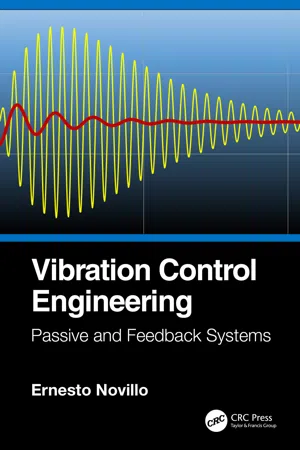
- 356 pages
- English
- ePUB (mobile friendly)
- Available on iOS & Android
About This Book
This book applies vibration engineering to turbomachinery, covering installation, maintenance and operation. With a practical approach based on clear theoretical principles and formulas, the book is an essential how-to guide for all professional engineers dealing with vibration issues within turbomachinery. Vibration problems in turbines, large fans, blowers, and other rotating machines are common issues within turbomachinery. Applicable to industries such as oil and gas mining, cement, pharmaceutical and naval engineering, the ability to predict vibration based on frequency spectrum patterns is essential for many professional engineers. In this book, the theory behind vibration is clearly detailed, providing an easy to follow methodology through which to calculate vibration propagation. Describing lateral and torsional vibration and how this impacts turbine shaft integrity, the book uses mechanics of materials theory and formulas alongside the matrix method to provide clear solutions to vibration problems. Additionally, it describes how to carry out a risk assessment of vibration fatigue. Other topics covered include vibration control techniques, the design of passive and active absorbers and rigid, non-rigid and Z foundations. The book will be of interest to professionals working with turbomachinery, naval engineering corps and those working on ISO standards 10816 and 13374. It will also aid mechanical engineering students working on vibration and machine design.
Frequently asked questions
Information
Part I Vibration Theory of SDOF, MDOF and Continuous Dynamic Systems
1 Dynamics of Linear SDOF Systems
1.1 Introduction to Machine’s Vibration
- Vibration at a critical velocity
- Lateral vibration
- Torsional vibration
- Axial vibration
- Vibration transmission to foundations and other installations

Table of contents
- Cover
- Half Title Page
- Title Page
- Copyright Page
- Dedication
- Contents
- Preface
- Acknowledgements
- About the Author
- Abbreviations
- PART I Vibration Theory of SDOF, MDOF and Continuous Dynamic Systems
- PART II Turbo Machines And Ship Vibrations
- PART III Vibration Control Systems
- Index